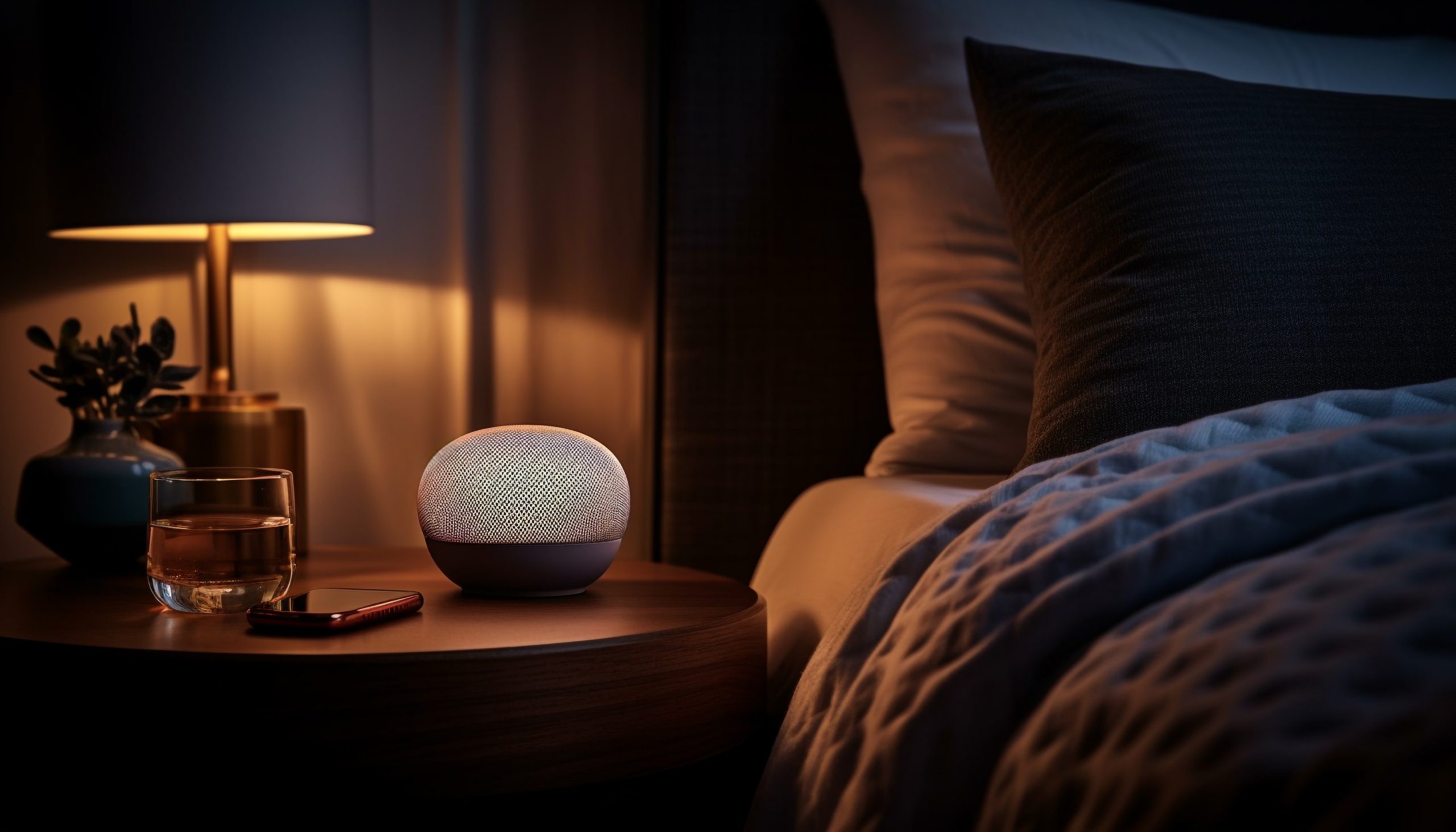Does a Night Light Affect Sleep Quality? Fact vs. Myth

What Is a Night Light?
A night light is a small, low-intensity light source designed to provide gentle illumination during the night. Unlike overhead lights or lamps, night lights are not meant to fully light up a room but to offer just enough brightness for visibility, comfort, or ambiance.
Night lights come in various forms:
– Plug-in wall lights
– Battery-operated LED lights
– Smart night lights with motion sensors
– Night lights combined with alarm clocks, speakers, or wireless chargers
Many modern night lights are even designed with color therapy and sleep cycle awareness in mind.
The Relationship Between Light and Sleep
To understand how night lights may affect your sleep, we first need to understand how light interacts with your brain and body.
Your body has an internal clock called the circadian rhythm, which helps regulate your sleep-wake cycle. The main influencer of this rhythm is light—especially blue light. When your eyes perceive light, it sends a signal to your brain’s suprachiasmatic nucleus (SCN) to either release or suppress melatonin, the hormone responsible for sleep.
– Bright blue light (from phones, TVs, etc.) suppresses melatonin, making it harder to fall asleep.
– Warm, dim light (like that from a candle or a soft night light) has less impact on melatonin production and can be more sleep-friendly.
Are Night Lights Bad for Sleep?
Let’s break down the myths vs. facts:
Myth 1: All Night Lights Are Harmful
Not all night lights are created equal. The impact of a night light depends on:
– Its color temperature
– Its intensity
– Its position in the room
A harsh, blue-toned LED night light placed directly next to your bed may indeed interfere with sleep. But a soft amber or red-toned night light placed at a low angle or across the room is unlikely to cause disruption—and can even be helpful.
Fact: The Right Night Light Can Support Better Sleep
Some people actually sleep better with a small light source. These groups include:
– Children who fear the dark
– Elderly individuals who need to move safely at night
– People with anxiety who feel comforted by a light presence
A low-lumen, warm-colored night light can reduce anxiety, help prevent accidents, and support a smoother transition into sleep.
Psychological Benefits of Night Lights
Night lights aren’t just physical tools—they also affect the mind.
1. Reducing Fear and Anxiety
Many people, especially children, have a fear of the dark. A night light helps reduce feelings of vulnerability and fear, creating a psychologically safe space for rest.
2. Enhancing Sleep Rituals
Turning on a specific night light can become part of your sleep hygiene routine, signaling to the brain that it’s time to wind down.
3. Preventing Sudden Wakefulness
Waking up in total darkness can trigger stress or disorientation. A subtle glow can ease your return to sleep if you wake during the night.
Color Matters: Best Night Light Colors for Sleep
Not all colors are equal when it comes to sleep. Here’s how different colors affect your rest:
Color | Effect on Sleep
——|—————-
Blue | Suppresses melatonin; avoid at night
White | Neutral but can be too bright; use cautiously
Red/Amber | Best for sleep – least effect on melatonin
Green | Moderate suppression of melatonin
Purple | Calming, but may still disrupt melatonin if too bright
Recommendation: Choose a red or amber night light with adjustable brightness.
Should Children Use Night Lights?
For kids, especially toddlers and preschoolers, night lights can serve a crucial role in bedtime routines.
Pros:
– Reduces fear of the dark
– Encourages independence in nighttime bathroom trips
– Adds fun and comfort to bedtime
Cons:
– Bright or blue-toned lights can delay melatonin release
– May lead to overdependence for falling asleep
Solution: Use low-light, warm-colored lights with a built-in timer or dimmer to reduce brightness as they fall asleep.
Are Night Lights Useful for Seniors?
Yes. Older adults are more prone to falls and injuries during nighttime bathroom trips, and sudden exposure to bright light can be disorienting.
Using motion-sensor night lights along hallways, bathrooms, and bedrooms can:
– Prevent accidents
– Support healthy circadian rhythm
– Improve nighttime navigation.
Smart Night Lights: The Modern Solution
With the rise of smart home devices, smart night lights now offer features such as:
– Adjustable color temperature
– Motion detection
– Scheduled dimming
– Bluetooth audio
– Wireless charging pads
These multifunctional devices can enhance convenience and improve sleep hygiene when used correctly.
Tips for Using a Night Light Without Hurting Sleep Quality
1. Choose warm light colors (red or amber)
2. Keep brightness low (under 50 lumens)
3. Position the light away from your eyes or bed
4. Use motion sensors or timers
5. Avoid using screens before bed – they emit blue light
6. Try sunset simulation lamps to relax naturally
7. Make it part of your nighttime ritual for consistency
Final Verdict: Are Night Lights Good or Bad for Sleep?
It depends on how you use them.
✔️ Smart use of warm, low-intensity night lights can improve sleep quality, reduce anxiety, and prevent nighttime accidents.
❌ But the wrong light—especially blue or overly bright ones—can disrupt melatonin production and delay sleep.
Do adults benefit from night lights
A: Yes. Adults with anxiety, frequent bathroom trips, or sleep issues may find night lights helpful—especially red-toned or smart models.
Q: Is sleeping with a night light harmful for babies?
A: For infants under 6 months, darkness is better. For toddlers and kids, a dim night light is fine—especially if it helps them feel secure.
Q: Can a night light help with insomnia?
A: Indirectly, yes. A night light can aid in relaxation and reduce stress, but it’s not a standalone cure. It’s most effective when used with good sleep hygiene.
